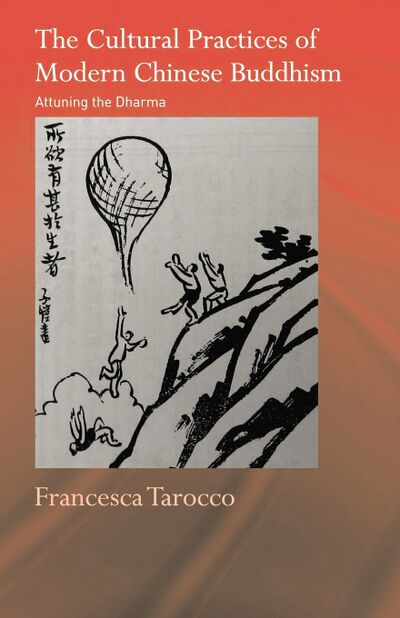The Cultural Practices of Modern Chinese Buddhism
< Books
| Line 1: | Line 1: | ||
{{Book | {{Book | ||
|FullTextRead=No | |FullTextRead=No | ||
| − | |BookToc= | + | |BookToc=**{{i|''List of figures''|ix}} |
| − | + | **{{i|''Acknowledgements''|xi}} | |
| − | |||
| − | |||
| − | |||
| − | |||
| − | |||
| − | |||
| − | |||
| − | |||
| − | |||
| − | |||
| − | |||
| − | |||
| − | |||
| − | |||
| − | Part 2 | + | *{{i|'''Introduction: modern Buddhist cultures'''|'''1'''}} |
| − | 2.1 | + | *'''Part 1''' |
| − | + | *{{i|'''The cultural practices of Buddhist modernity'''|'''25'''}} | |
| − | 2.3 Songs of | + | *{{i|1.1 Shanghai Buddhism|27}} |
| − | 2.4 The | + | *{{i|1.2 Vegetarian identities|31}} |
| − | 2.5 Hymns, | + | *{{i|1.3 The esoteric fever|39}} |
| − | 2.6 Songs of | + | *{{i|1.4 Printing the dharma|41}} |
| − | 2.7 | + | *{{i|1.5 Continuities and discontinuities|46}} |
| − | 2.8 | + | *{{i|1.6 Buddhist canons|49}} |
| − | + | *{{i|1.7 Yang Wenhui|51}} | |
| − | + | *{{i|1.8 Awakening the Faith|53}} | |
| − | 2. | + | *{{i|1.9 Buddhist books beyond China|56}} |
| − | 2. | + | *{{i|1.10 Shanghai Buddhist publishers and writers|59}} |
| + | *{{i|1.11 The Sanskrit Buddhism of Su Manshu|66}} | ||
| + | *{{i|1.12 Life and death in Feng Zikai’s drawings|71}} | ||
| + | *{{i|1.13 The Buddhist periodical press|75}} | ||
| + | *{{i|1.14 Buddhism, religion and the nation|81}} | ||
| + | *{{i|1.15 Images of modern Buddhism|85}} | ||
| + | |||
| + | *'''Part 2''' | ||
| + | *{{i|'''The Sound of Modern Buddhism'''|'''97'''}} | ||
| + | *{{i|2.1 Li Shutong: From Shanghai to Tokyo, and back|99}} | ||
| + | *{{i|2.2 Li Shutong leaves home|101}} | ||
| + | *{{i|2.3 Songs of nationalism|105}} | ||
| + | *{{i|2.4 The power of song|107}} | ||
| + | *{{i|2.5 Hymns, anthems and songs|109}} | ||
| + | *{{i|2.6 Songs of modernity|113}} | ||
| + | *{{i|2.7 Buddhist songs|116}} | ||
| + | *{{i|2.8 Continuities and discontinuities|123}} | ||
| + | *{{i|2.9 Scientific gadgets: Buddhist radio and phonograph recordings|128}} | ||
| + | *{{i|2.10 Buddhist songs in the digital age|130}} | ||
| + | |||
| + | **{{i|''References''|146}} | ||
| + | **{{i|''Glossary''|172}} | ||
| + | **{{i|''Index''|177}} | ||
|AddRelatedTab=No | |AddRelatedTab=No | ||
}} | }} | ||
Revision as of 20:52, 2 July 2020
Buddhism in China during the late Qing and Republican period remained a powerful cultural and religious force. Francesca Tarocco is a rising star in this field and offers an innovative high-quality piece of work that presents a new perspective on the influence of Buddhism on Chinese culture. Drawing on scarcely analyzed historical and archive sources, including photographs and musical scores, Tarocco adeptly argues that Chinese Buddhism played a more vital role in shaping Chinese culture than previously assumed. This enlightening study fills a significant gap in the field of Chinese Buddhist history. Focusing on the cultural side of Buddhism, it adds breadth and balance to studies in Buddhism as a whole, appealing to professionals and academics with an interest in Buddhism and Chinese Buddhist history. (Source: Routledge)
| Citation | Tarocco, Francesca. The Cultural Practices of Modern Chinese Buddhism: Attuning the Dharma. London: Routledge, 2007. |
|---|---|

